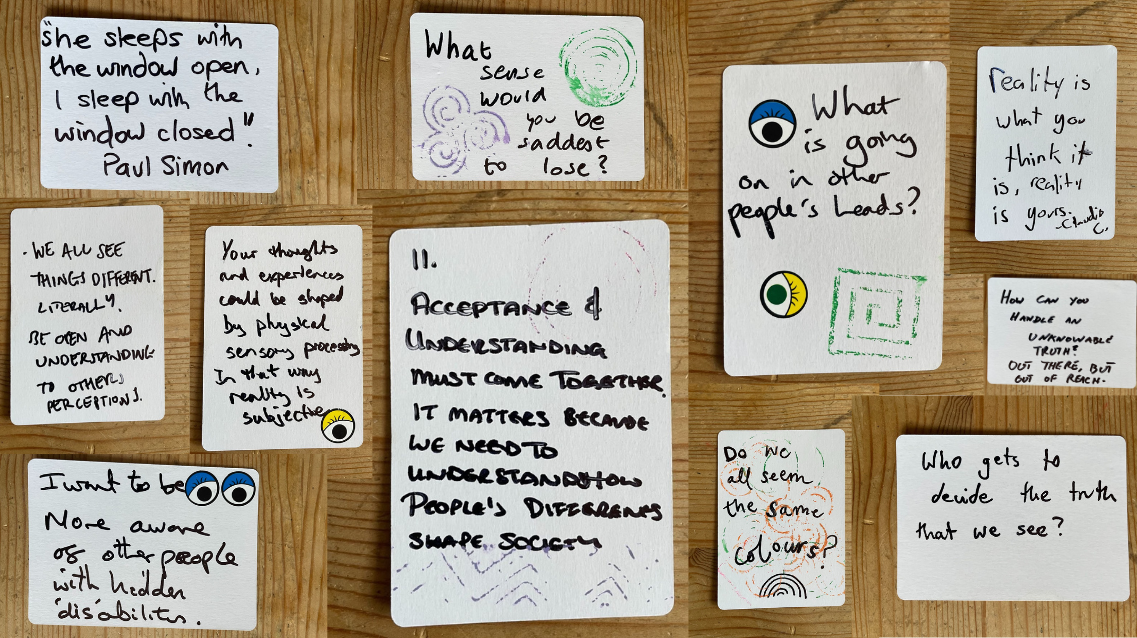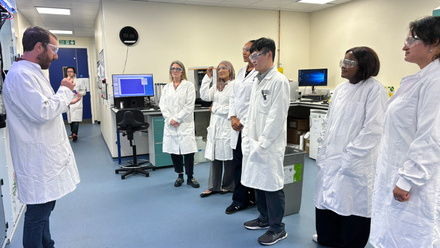Senseshift: BNA Local Groups bring Public Engagement to Glastonbury Festival

The Senseshift team in their hi-vis at Glastonbury Festival's Science Futures area
I’m Will, a resident doctor with a background in neuroscience and an interest in mental health. I currently work as a Clinical Teaching Fellow in Psychiatry in Bristol, and am a member of the Bristol BNA Local Group.
This year, using Local Groups Funding, I led on forming a multidisciplinary team of early-career doctors, science communicators and neuroscientists from BNA Local Groups across the South West to deliver Senseshift, an immersive, interactive installation designed to challenge how people think about perception, in the Science Futures area at Glastonbury Festival. Though coming from different sectors, institutions and disciplines, our group was collectively driven by a fascination with perception, a love of public engagement in festival spaces, and a desire to raise awareness of how differently people experience the world. Our focus was driven by a public engagement need felt in common among the different parts of the neuroscience community that we each belong to: a need to promote more positive attitudes towards neurodiversity and mental health, having noticed that much of the public conversations around mental health revolve around affective disorders and well-being and less so about disorders which affect perception like psychosis and autism spectrum disorder.
We began our preparation back in the Autumn of 2024; discovering that we had been selected to participate in March this year, we set about putting together our installation over the following weeks and months. We finally arrived at Glastonbury on a hot Monday afternoon of the festival week, met by a sea of hi-vis and chequered tape, and set about constructing our stall. The space was structured around three areas: a mindfulness and sensory check-in, which guided visitors through slow breathing, sensory grounding and interoception; a second section of sensory demos exploring sound, vision and taste; and a reflective space built around a set of cards. Each card paired factual information about the neuroscience of perception with an open-ended question, designed to prompt reflection or conversation and we sat with members of the public to help facilitate these discussions and invited them to write reflections on plain playing cards to leave around our stall (see the collage below). Topics ranged from predictive coding and the influence of language on colour perception to the way sensory differences shape identity.

The team setting up the stall / a view from inside the installation / festival-goers engaging with Senseshift
The festival gates opened on Wednesday morning, and gradually we began to meet our first visitors. By Thursday, Science Futures was a hive of activity, and festival-goers washed through the stalls. At our stall, visitors moved at their own pace: some read and left quietly, while others stayed for over half an hour, trying all of the demos and talking with us at length. We were surprised by how many people came alone, and many said they appreciated having a moment away from the sensory throng of the festival, which felt especially important when dealing with both emotionally loaded issues but also sensitivity to our senses.
We were fascinated by the different ways visitors engaged with the content, and particularly valued hearing the insights of people from a wide range of backgrounds. I was struck by a response to a card that asked, “What would it be like if your reality didn’t match the one everyone else seemed to share?” which led to conversations about dementia and memory loss, and was not something we had initially anticipated when designing the experience, where we had been thinking primarily about psychosis and neurodivergence. It made me reflect on how fluid real experiences and changes in perception can be, outside of clinical categories, and challenged my own thinking around different perceptual realities. What different things might be happening to our brains when perception shifts? But also, what connects those experiences?

Participant response cards collected at the Senseshift stall
Opening up conversations about mental health and altered states wasn’t always easy, and at times, it prompted reflections on grief and caregiving. Some visitors found the content and discussions confronting, but most found it positively surprising and intriguing. For many, it was the first time they had thought about neuroscience as something relevant to their own lives. There were also lots of lighter moments – people laughed at the illusions, some took photos of their friends and lots stayed longer than we expected.
Across five days, over nearly 600 visitors engaged with the installation. Most were in their twenties or thirties and although many didn’t consider themselves science-engaged, almost all were curious and open to talking with us. Between us, we had experience in clinical practice, teaching, and public engagement, but Glastonbury felt different to the spaces we were used to, and despite coming to the festival as so-called experts, the power dynamic between facilitators and audience felt much flatter. At times it felt exposing, but actually, it allowed for more mutual discussion and made the experience vibrant and exciting.
Looking to the future, we’re keen to exhibit in more spaces. The experience was a powerful example of how with some thought, engaging with the public about neuroscience and mental health can be effective even in unusual spaces. It also showed us how open people are to engaging with scientific ideas when the invitation feels more thoughtful and less didactic, and touched by a little Glastonbury magic, we’re excited to see where that might lead next.
If you could change one thing about neuroscience in your local area, what would it be? Do your peers and others across the different institutions in your area feel similarly? By joining your BNA Local Group and working with your Local Group Representatives to devise a strategy and secure project funding, together you can drive local change, and take collective ownership over the future of neuroscience where you are.






